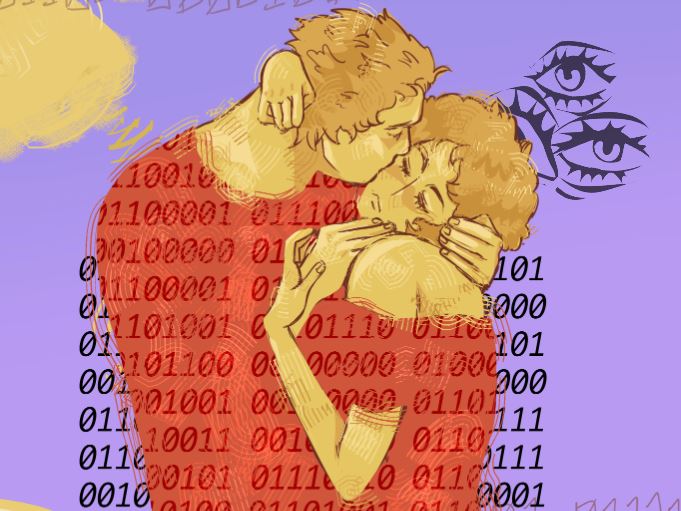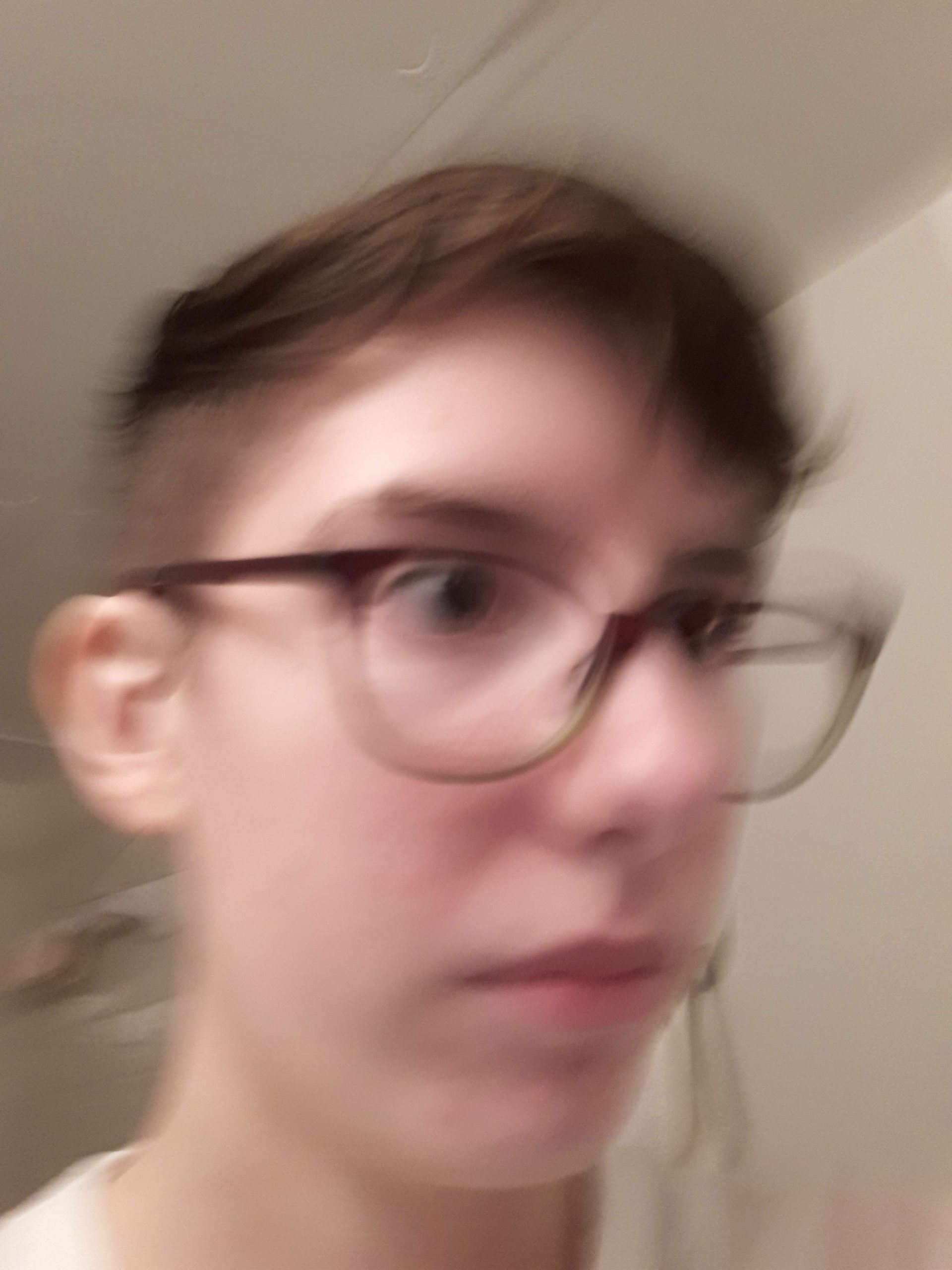
If there’s a hot button topic that you’ve heard about recently, there’s a decent chance that artificial intelligence, or AI, has been part of the discussion. There are many ways to define artificial intelligence, but in simple terms, it’s broadly considered “a field which combines computer science and robust datasets to enable problem-solving,” according to IBM. On paper, it sounds beneficial. And it certainly can be! But as many people know, it’s also thrown a wrench into the ethical framework of many industries across the globe — think online shopping, cybersecurity, healthcare, manufacturing — and the list is ever-expanding. The strides and setbacks of AI are complex and would take far more than the limitations of this article to deconstruct, but I know where we can start. Abandon all hope, ye who enter here… we’re taking a field trip to the art world.
Creatives take immense pride in originality; the existence of copyright law is proof enough of that. One of the biggest controversies regarding the creative use of AI is authorship. Specifically, who said authorship belongs to. There are countless examples of this conundrum, but a better-known instance occurred in September of 2022, when an artist named Jason M. Allen won first prize in the Colorado State Fair’s annual art competition for emerging digital artists. His artwork was created using an AI program called Midjourney, where he wrote and input strings of text to generate a highly detailed digital image. Allen persistently defended his work against the enormous pushback it received online.
“I’m not going to apologize for it. I won, and I didn’t break any rules,” he stated in an interview with the New York Times. Naturally, nobody was infuriated by this response, so everyone came to an agreement in an amicable manner and the conflict was resolved then and there.
I’m kidding — it was a bloodbath.
Many artists believe the usage of AI programs like Midjourney to be illegitimate, since it collects data from art that’s created by real people. Midjourney and other similar programs use a machine learning algorithm, meaning they produce an output value from a set of input data. In this case, digital images are generated from art made by humans. There’s a common argument that this is an unlawful usage of artists’ work, and thus an infringement of copyright laws. Unfortunately, copyright laws were formulated during a time when AI was hardly a blip in the public’s mind, so it exists in a bit of a gray area when it comes to enforcement. The only thing that’s confirmed is that AI generated art is not protected by copyright.
But what about the dataset of artwork that it pulls from? Are those artworks not legitimate? Are they not protected from unauthorized usage? Ideally the answer is yes, of course they are! But how do we address a breach of copyright law when these datasets are so immense? In Midjourney’s case, the program was trained using a dataset that contained over five billion images. The number itself is difficult to wrap one’s head around, let alone how to begin addressing its relationship with copyright law.
Although this is a critique of AI’s usage in art, I want to emphasize that AI isn’t inherently negative. It’s simply a tool and it should be treated as such. There are pervasive fears floating around the creative industry that common entry-level studio positions such as visual development or storyboard revision will become completely automated in the future. While we’ve seen instances of this happening, one example being Netflix Japan’s short film “Dog and Boy” — which credits AI for its background design — industry professionals still largely prefer the touch of a human rather than the eye of a machine.
In early March of this year, I was lucky enough to attend a virtual talk with the 2023 Oscar-nominated directors for Best Animated Feature. As the discussion gradually leaned toward the topic of AI, one comment stood out to me. Chris Williams, director of “The Sea Beast”, briefly gave his two cents on AI’s role in the industry. “When I see people generate this art and say, ‘oh this could be vis-dev,’ I think well, I suppose it could be, but what about all the amazing vis-dev artists that I’ve worked with?” he remarked, laughing a bit. “Where does it stop, y’know?” The other directors in the call seemed to agree, and hearing this gave me a sense of optimism and hope that I hadn’t realized I’d lost.
The truth is that creative directors don’t want the industry to become automated. Many of these positions are how animators and other artists find their footing and make a mark for themselves, giving them the ability to climb the ranks in their respective studios. I don’t think that we’ll ever reach a stage of full automation in the art world, and at least for the time being, many prominent people in film and animation agree.
That said, visual art and animation are only a few small pieces in the larger puzzle of ethical conflicts regarding AI in the art world. If you know anything about AI then you might recognize the name ChatGPT, which is a popular chatbot developed by OpenAI. In January of this year, TIME magazine published an investigative article highlighting OpenAI’s exploitation of outsourced Kenyan workers whose jobs were to keep their chatbot functional. These employees earned less than $2 an hour to sort through some of the vilest content on the internet so they could prevent ChatGPT from replicating said content. It was a thankless, underpaid, taxing job — and it took its toll. Several employees reported suffering from recurring visions and losing sleep over the memories of what they’d seen. The working conditions became so unsustainable that the outsourcing firm canceled its contracts with OpenAI eight months before the agreed date of termination.
When looking at manipulative labor practices like the one above, it begs the question of how often this occurs. Considering that OpenAI took notes on how Facebook and other social media sites built their content moderation systems, this is far from the first time this has happened. And unfortunately, it’s likely not the last. Without a standard of ethical guidelines to follow when developing AI, we risk causing psychological and financial harm across workforces and even entire nations. These are an ugly reminder that no matter how powerful a system of technology is, it fundamentally relies on human labor. This human labor is often sourced from the global south and is almost always exploitative, as history has demonstrated repeatedly.
Although most of these stories paint a very doom-and-gloom vision for the future, one thing is certain: Artificial intelligence isn’t going anywhere. In the past few years, AI has become cheaper, more accessible to the public, and even more capable of problem-solving. It’s steadily leached into industries that incorporate the use of technology (which let’s be honest, is almost every industry you can think of). AI is here to stay and it’s up to us to determine the rules and conditions that come with that.
I’ve often noticed that when discussing opinions about AI, a person’s first impression and/or encounter with it has a strong and lasting effect on their opinion going forward. If someone has a negative encounter, such as an argument over plagiarized work or a job position becoming automated, then AI is seen as a problem running rampant. If an encounter is a positive one, such as a person being rewarded or garnering popularity from AI-generated artwork or literature, then AI is commonly seen as a boon with little to no drawbacks.
My own first encounter with AI is a bit silly but altogether not an uncommon one; I first witnessed a text-based AI game called AI Dungeon in late 2019 on a Twitch stream. The stream’s host would input various text prompts, both goofy and normal ones, only to get increasingly ridiculous results. At the time I considered AI to be a form of entertainment and not much else, and in a lot of ways I still hold onto that feeling when I look at AI-generated art and stories. It’s fun to look at and dissect, sure, but you can tell that something’s slightly… off. Call it an uncanny valley effect of sorts, except instead of evoking a sense of fear it makes me feel as if I’m looking at a young child’s drawing. A sense of, “Well, you did the best you could!”
The phenomenon of image generation AI’s inability to replicate written language, or failure to generate the correct number of fingers on the average human hand is especially funny to me. Amidst the horror, there’s a sort of humor. Despite the many problems it brings, I still can’t bring myself to hate AI in and of itself. I can (and do) sling mud at the developers and shareholders that enable human rights violations, but the product of their labor has no intent. Artificial intelligence has no ill will or agenda. It has no awareness of what its creators are doing behind the scenes. Knowing where to direct our ire is an important thing to keep in mind.
AI has grown exponentially over time and that growth will continue as time marches on. Call me spiteful, but I highly doubt that AI will supersede human creativity and capability at any point. I don’t think that AI’s role or purpose should be to replace a human’s presence in a workspace, and in fact I don’t think that it’ll ever truly be capable of that. Despite a vocal minority who support automation and/or increased dependence on AI for tasks that humans have historically done themselves, I’ve gotten the impression that the AI revolution isn’t going to be on the scale of The Matrix or I, Robot.
Artificial intelligence is a tool that we’ve created and more importantly, it’s a tool that we have control over. We determine the role that it plays in society at large. It’s up to us to establish ethical guidelines when developing and using AI so that we can avoid harming the safety and livelihoods of others. This isn’t just our ability; this is our duty. In the creative industry alone, there are an array of benefits to using AI tools to assist with a human’s job. Examples include procedural modeling and particle effects in programs like Blender and Maya, or illustrative tools in Photoshop and Illustrator. These AI-based tools save artists loads of time when meeting their deadlines and allow projects to proceed smoothly. AI is not and never should be the whole — it’s just one of many pieces in our repertoire!
All of this is to say: No, robots will not poison your water supply, burn your crops, and deliver a plague upon your houses. Much like a child stumbling through the stages of walking, AI has a long way to go until it rivals the tenacity of the human spirit. I for one quite enjoy opening Artbreeder and making it generate unhinged pictures of birds for my own entertainment or pictures of Jesse Pinkman going to Wisconsin Dells. It’s important for us to remember that behind these advanced algorithms and fancy programs, there are people. Ironically, people are the very life and blood that pumps through the heart of artificial intelligence, and to disregard them is to do them a disservice. Humans are capable of quite a lot! Minimizing our being to a set of tasks performed by a machine is to grossly underestimate what we’re capable of.
As a closing thought — I believe that there’s plenty of room on the road to the future for both humans and AI to coexist; we just need to find our lanes.

Comments